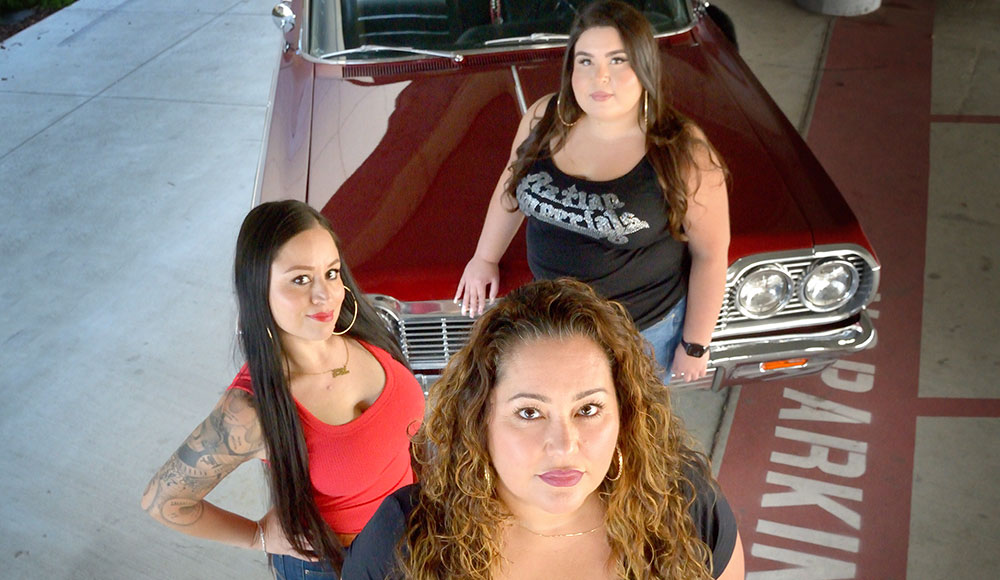I am standing in the sidewalk shade next to the Big Blue Tent parking lot behind the McEnery Convention Center. Mark Sermeno, producer of the upcoming San Jose Lowrider Super Show, has lined up three lowriders for Metro to photograph with their cars. I have no idea if I’m in the right place.
Then I hear an old-school beat blasting out of a candy-red Oldsmobile Cutlass with gold wire rims, windows rolled down, slowly coming down the street. The driver cruises by; her red sweater and red lipstick match the car.
She parks across the lot, where I see a glitter-adorned blouse flashing in the sun next to a blue Impala. I head toward three cars polished to a mirror finish; they are such eye candy it is hard to look away.
The Elgins song “Darling Baby” booms out of one of the cars as the three women embrace. Even though none are from the same car club, Christina Acuna, Dulce Fernandez and Lovina Valenzuela clearly share a bond of sisterhood. The lady lowriders have arrived.
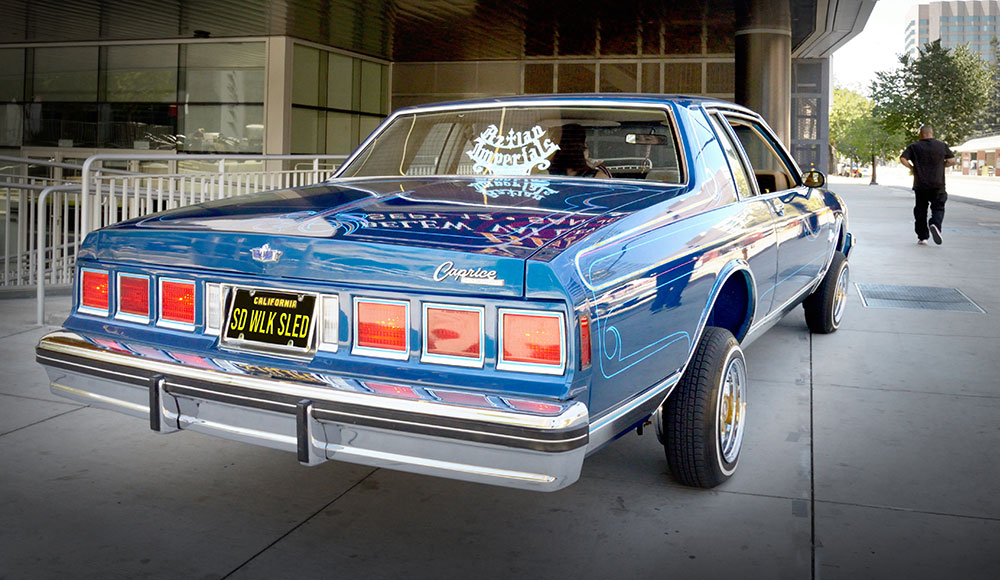

SISTERHOOD ON WHEELS
Lowriding puts both the cars and their owners on display, and more and more of those owners are women. Super Show producer Mark Sermeno, who started lowriding in 1985, says that in the past, car clubs had bylaws that would not allow women to join. Sermeno’s club, the Impalas, once excluded female lowriders, but when a woman bought one of the club’s treasured Impalas, they changed the bylaws to keep that car in their club. Love for the car broke the barrier.
Love for cars can break other barriers as well, Sermeno says. “You’ve got correction officers, police officers, lawyers, doctors. They have tattoos, and they love to cruise.”
Lowriding may have started as a male-dominated culture, but Christina Acuna of Las Dueñas, an all-female car club in San Jose, says when they cruise low and slow now, they get a thumbs up. And it can come from anyone.
Acuna recalls, “These two elderly white women are on the sidewalk, and we roll up in our rides with our windows down and our beats blasting, and these two ladies start laughing and nodding and giving us the thumbs up. They really like what we’re doing.”
FAMILY TIES
Rolling since June of 2019, Las Dueñas Car Club just celebrated its five-year anniversary. The club is about their sisterhood, it’s about their cars, but it is also about their community. President Angel Romero says, “We do volunteer work, homeless handouts, fundraising for new mothers, back-to-school drives—anything to give back.”
Lowriding is about commitment—to your familia, to your community, to defining who you are, to your artistic vision. It is also a financial commitment. Romero says she put more than $35,000 in her lowrider, and it isn’t done. She named her car Saturday Love, a name that comes from the R&B song by Cherrelle. Romero says, “For me, Saturdays are made for cruising, and that is my favorite song for a ride.”
Female lowriders have been around for a long time. Romero’s mother, Maricela Rodriguez, was a lowrider; she had a ’77 Monte Carlo she received for her quinceañera. At a very young age, Romero and her siblings would ride around with their mother. “We would just cruise around town, playing around with the switches,” Romero recalls. “It was our culture, how we grew up. It’s more than my voice. It’s my life.”
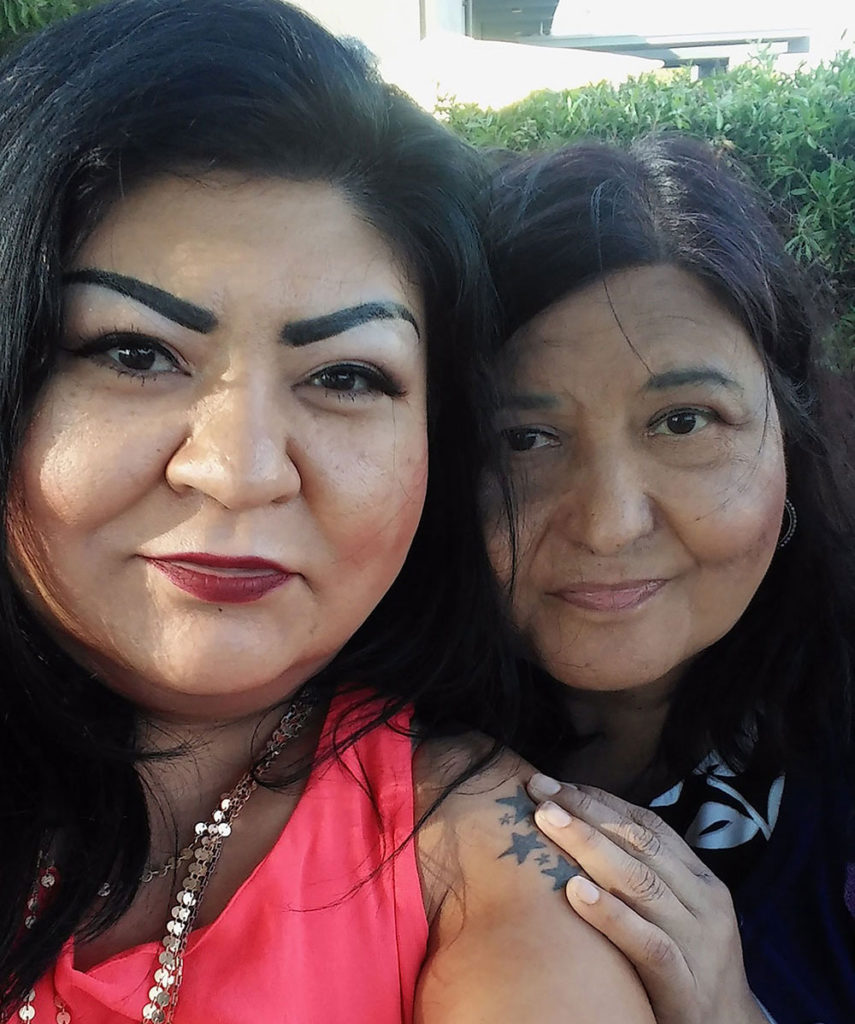

Now Romero has a 1965 Chevy Impala that she painted purple because that was her late mother’s favorite color. The paint job also features a mural of Maricela. Romero built her own car; she was hands on from the beginning, trying to do as much of the work as possible. I asked her where she went for advice about how to do all this.
“Mainly my cousins and boyfriend showed me to do things, my brother-in-law. I did the starter myself, alternator, valve covers, new gaskets, rebuilt the carburetor, got new rims, got true spokes. Everything was trial and error.” She laughs, “It’s endless. Now my back tail lights keep blowing my fuse! And I hate the hex screws. Oh, my God, they drive me crazy. I hate those screws. [Hex screws are prone to strip.] It’s all a labor of love. Except for the hex screws. What was Chevy thinking with those things?”
PRIDE OF OWNERSHIP
In lowrider clubs women find sisterhood, they find their voice. And it’s a voice that has risen across California. Down south, the Black Widows Car Club lay claim to the title of being the first all-female car club in Los Angeles, but they certainly weren’t the last. Sandy Avila leads Lady Lowriders, a car club in Pasadena, founded in 2021. “We used to be known as ‘passenger princesses,’ but now we’re running the show.”
Alberto Lopez Pulido, founding chair of the Department of Ethnic Studies at University of San Diego and author of the book San Diego Lowriders, says that city’s first all-female lowrider car club was the Ladies Pride Car Club, founded by Chris Cano, Lauren Vera, Elsa Castillo, and Sandra Ardilla.
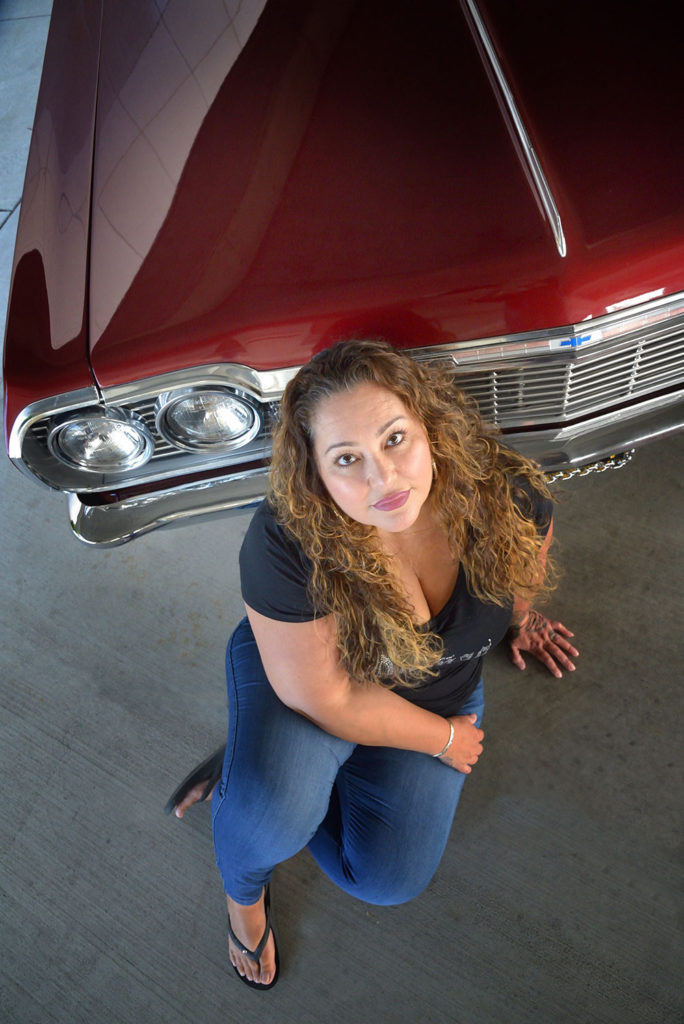

In a phone interview, Pulido directed me to his 2014 documentary film Everything Comes From the Street, which, though San Diego’s Chicano Park is its focal point, also offers a history of lowrider culture.
Interviewed in the movie, Ladies Pride co-founder Cano says, “You gotta remember, back then a lot of females weren’t allowed in certain things. … I said, ‘Something has to be done.’” When they formed Ladies Pride, they wanted a name that would make it clear they were a women’s car club—“not just some girl driving their boyfriend’s car.”
Castillo says, “Yeah, when we would stop to eat somewhere, guys would come up to us and say, ‘So, this is your boyfriend’s car’ or ‘This is your husband’s car,’ and we would laugh so hard. ‘No, these are our cars. We take care of them.’”
MEXICAN KNOW-HOW
At a female lowrider panel this past June at the Art on Wheels Festival in Watsonville, I asked Blanca Alvarez where she learned the engineering to make her car go up and down. She says, “Well, my dad, and my brother, and then my sisters in our car club. They have become my sisters, and we share everything, everything about every nut and bolt. But for the most difficult questions, I ask him.”
She points to a man sitting behind me and says, “When it gets really complex, when we are having trouble with something, we all go to him.”
Every head in the room turns toward the man behind me. I hear murmurs of respect. I turn around, smile at a slight, middle-aged man and ask him where he learned to alter cars. He says, “You decide what you want to do and then you figure out how to do it.”
I then ask the most gringo question: “It’s so complex, I mean, the hydraulics—did you go to school to learn this? Are you an engineer?”
Someone in the back laughs. The man smiles at me.
Then, as one voice, everyone shouts, “He’s a Mexican engineer!” and the entire room bursts into laughter.


The nuts and bolts, the wiring, the paint expertise, how to chrome, how to detail, the art talent, the science of hydraulics—this is all knowledge that comes from family and friends, members of a community sharing their knowledge.
It culminates in cruising, the essential gathering of their cars on the street, to show off their latest creations and share their knowledge, to share their identity, to bond with their fellow lowriders. It all goes down in the street. And if cops are lurking about, the cars can go back up with a flip of a switch.
RIDING LOW
For decades, police have targeted lowriders and cruising. According to Remezcla.com, Cal State Northridge professor Denise Sandoval credits a Chicano man named Ron Aguirre for creating the first hydraulic system, installing surplus parts from World War II fighter planes in a ’56 convertible. By 1958—the same year that Chevrolet introduced the first Chevy Impala—California outlawed cars that were modified to ride below the wheel rim. After that, the hydraulic systems were used to raise up the cars when under police surveillance and lower them after the cops took off.
Lowriding began in California among young Mexican Americans, who took the middle-class American symbol of the automobile and turned it upside down. Picture the flashiest possible rolling art creations imaginable, made to float bajo y lento (low and slow), all to sexy, throbbing music. Has there ever been a more dazzling symbol of defiance against police harassment?
I was born in California’s deep south—Bakersfield. Some of my Kern County cowboy cousins built monstrous, jacked-up pickups, arguably so high in the air they could be top heavy. I never heard of police harassing them on the pretense that these odd-looking trucks were too tall. Not once. Nunca. But somehow, vehicles being too low presented a danger to us, and police never stopped promoting a scary narrative about lowriders.
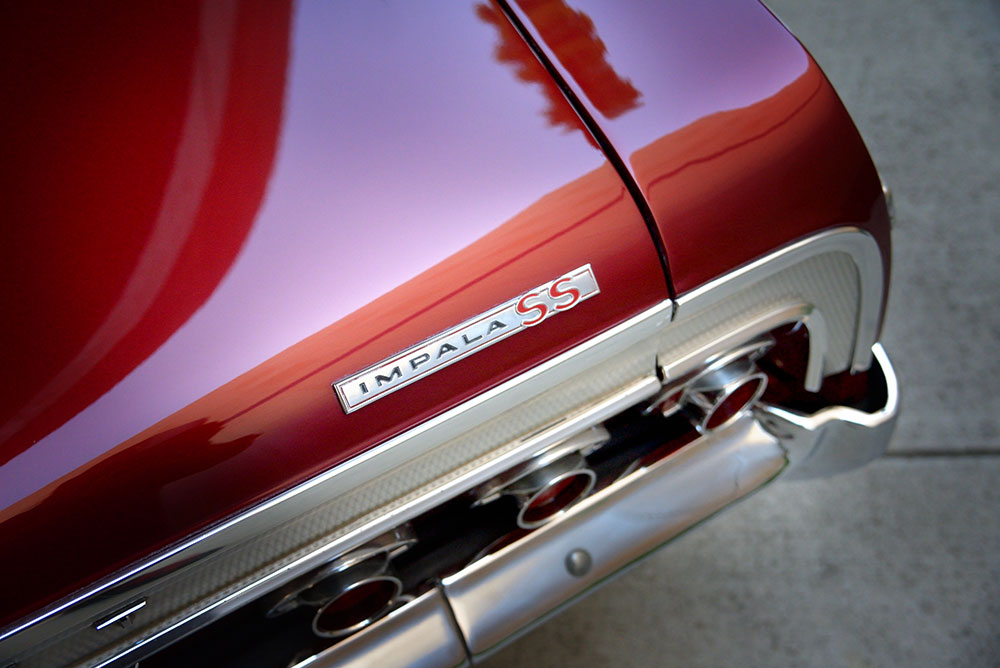

Las Dueñas’ Romero said that 20 years ago, on her first cruise along Santa Clara Boulevard in San Jose, she got pulled over and the officer gave her a ticket for not having seat belts in the backseat. She told the officer that her car was a 1965 and that it met the criteria for not needing backseat belts. The officer said, “You don’t know what you’re talking about,” and gave her a ticket. That officer was either lying or he did not know what he was talking about.
Romero said, “Back then a $300 fine was a lot of money. I went to the library and looked up the code and found where it said the ’68 or older cars did not require seat belts. I got a court date, and the judge threw my case out. Things seem to be getting better, now with the repeal of the no-cruising laws. We keep doing what we do, we let people know we’re an awesome community, and this year even the San Jose police helped with our Cinco de Mayo Lowrider Parade.”
The racial profiling component of the lowrider story is sharply portrayed in Everything Comes from the Street, in which former National City police officer Raymond Allen explains how the police came up with a handful of old ordinances that nobody was aware of. “We would write tickets for the batteries, the hydraulics, the modified frames, the tires. On a typical night I would write ten to twelve tickets and impound two cars.”
Lowrider Galindo remembers, “They were like a wolf pack, you know? Ready to do the Pac-Man on you. And those tickets cost, you know? If you were saving to do something custom to your car, you gotta go to court. Here come the judge. Boom!”
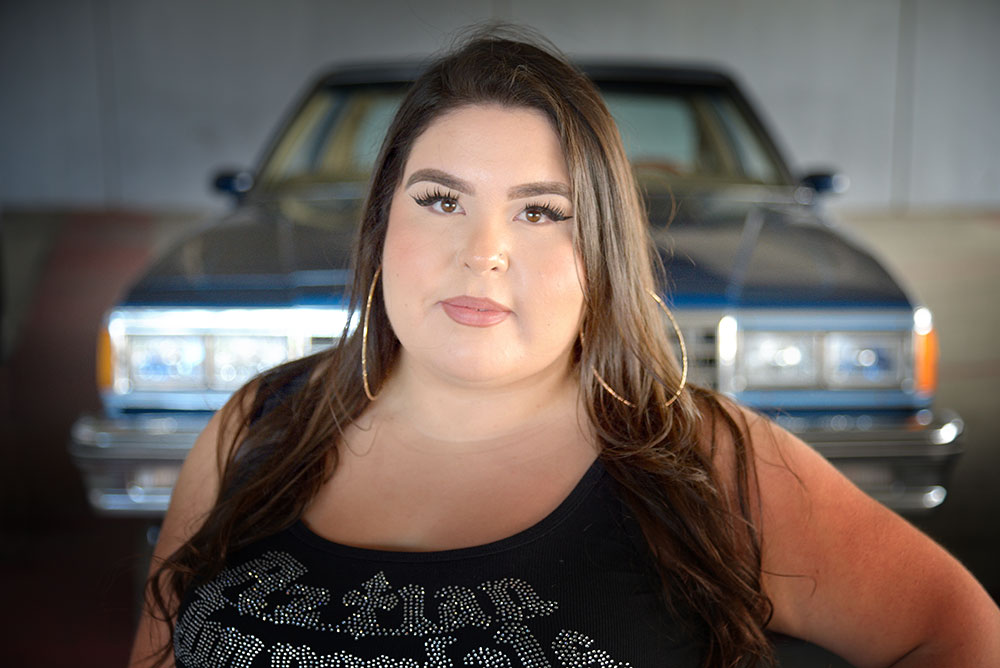

LOWRIDER RITES AND RIGHTS
Growing up in San Francisco’s Mission District, Roberto Hernandez loved zoot suits and art. As he told CapRadio.org, lowriding “was in my DNA.” The president of the San Francisco Lowrider Council remembers the SF glory days: “At one point it was bumper to bumper for 20 blocks. It was like a parade every Friday and Saturday night.”
Police issued citations, made arrests and even shut down Mission Street, where lowriders went to cruise. Across town in white neighborhoods, cops left the kids alone to race, while in the barrio they gave out tickets for going low and slow. “NO CRUISING” street signs gave police the power to levy a $250 fine to drivers who passed the same point twice within six hours.
Hernandez said he was arrested 113 times, and he was done. He and other lowriders filed a civil rights lawsuit against San Francisco Mayor Dianne Feinstein and the police. They won.
In 2022, the city of San Jose overturned a ban on cruising that had been in effect since 1986. A wider victory came on Oct. 13, 2023, when Gov. Gavin Newsom signed California Assembly Bill 436 into law, repealing lowrider bans and lifting a state prohibition on modifying a vehicle to reduce its clearance from the roadway. Targeted by police for more than half a century, lowriders can now cruise California police-hassle-free. Their good works continue, holding the community together, “keeping the peace.” Californians have the green light to ride low and slow.
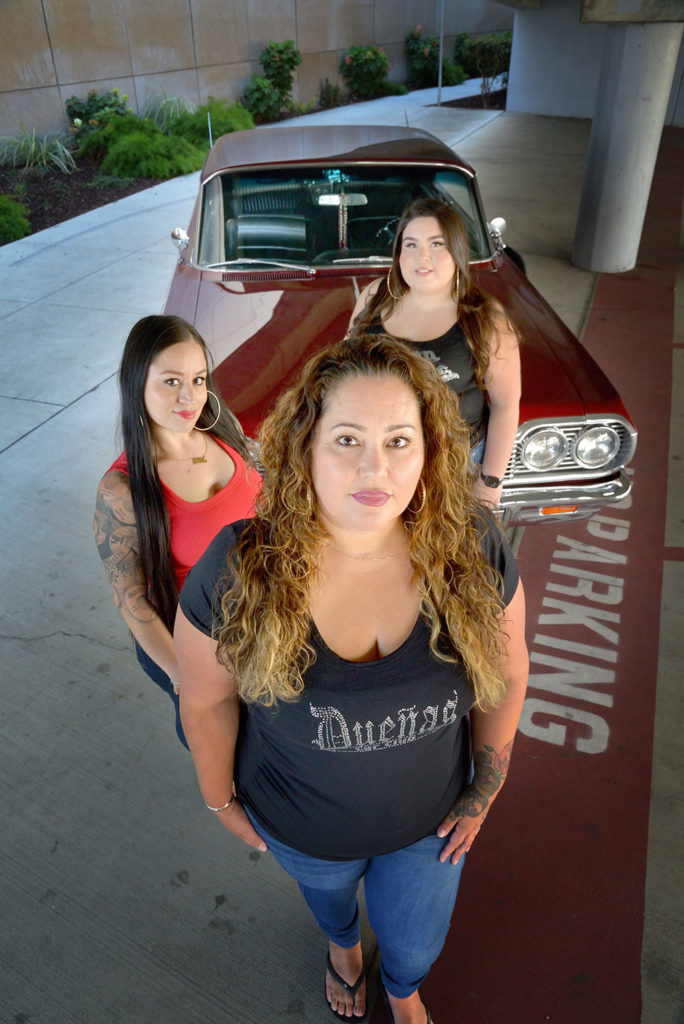

As we talk next to their eye-catching rides, I ask Acuna, Fernandez and Valenzuela what they see for the future of lowriding. They say they want to inspire the next generation of women to seize their power. The Chicano community will cruise on, and pass on what they’ve learned to the next generation, and to those that follow. Experimentation is fundamental to the art of the cars, and they will forever represent and embody change. It will evolve to express the identity of the next generation and the next. As interviewee Constancio says in Everything Comes from the Street, “Lowrider is the Chicanos’ way of resisting and saying, ‘You know what? ¿Sabes que? This is me. ¿Y qué?’”
Lowrider knows every street, yeah
Lowrider is the one to meet, yeah
Lowrider don’t use no gas now
Lowrider don’t drive too fast
This weekend offers a chance to see these rolling works of art that embrace family and community. The San Jose Lowrider Super Show takes over the San Jose McEnery Convention Center on Aug. 24, running 11am to 6pm.(Ticket are on Eventbrite.)
Sermeno says that he can’t do car hopping in the convention center, but on Saturday night there will be cruising in three locations. On Aug. 25 a free car hopping event called King of the Street takes place at the SAP Center, along West Santa Clara Street and Barack Obama Boulevard, from 8am to 3pm.
Beyond this weekend, another way to soak up lowrider culture is to visit the exhibit “Forever Cruising: Cultura de Lowriders.” The Martin Luther King Jr. Library at San Jose State presents the exhibition, put together by the library’s Africana, Asian American, Chicano, & Native American Studies Center, through Sept. 15. “Forever Cruising” celebrates the past and present of the lowrider community through publications, artwork, model cars and other materials—including work by local photographers Alex Knowbody, Angel Abreo, Araceli Mireya Holmes, Daniel Boles, Martha Herrera and Steven Martinez.
Another site to see is the United Lowrider Council of San Jose (ulcsj.com), which offers a trove of information on South Bay lowriders. The council has posted some fascinating footage, including a TV news clip from 1978 that focuses on Rachel Flores, a member of the all-female club Sophisticated Ladies.
And finally, there’s the must-visit online archive compiled by South Bay resident Ricardo Cortez, who calls it “the world’s largest lowrider library.” Cortez digitized the collection—including issues of San Jose’s own Lowrider Magazine and many other publications—to preserve this cultural history and ensure “access to these incredible pieces of lowriding history remains available.” Find it at LowriderFever.com.
